In parks, gardens and forests, you can see many different plants. In the fall, their foliage becomes yellow-red, looks like little lights were lit. And ripe fruits only complement this picture. In late autumn, mountain ash gives berries that are rich in useful trace elements and vitamins. The tree is easy to grow: it does not require special care and tolerates frosts.
Content
Plant features
Mountain ash botany attributed to frost-resistant deciduous shrubs. She is part of the Rosaceae family. The growing area is vast - from the middle strip to the Far North. A tree can be planted in any soil: it takes root in sand, clay, chernozem, rocky soil.
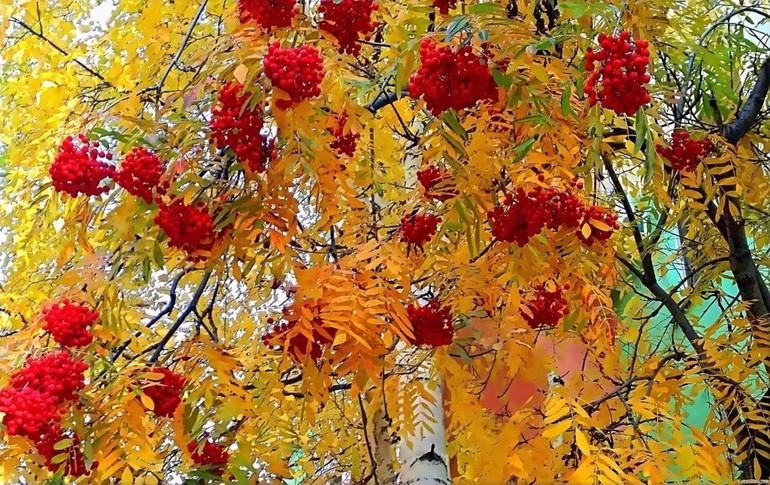
A spectacular appearance manifests itself in autumn rowan, as well as winter. At the end of October, the leaves turn yellow, and the berries ripen, acquiring a red hue. But there are varieties with white, orange and red fruits. The height of the plant varies from 80 cm (shrubs) to 1.5 m. The record holder is an ordinary mountain ash, its growth reaches 10 m.
Well-developed roots go deep under the soil, where they reach groundwater. Therefore, the plant does not need frequent watering, it receives vitality from the bowels of the earth. Straight branches extend from the dense elastic trunk. With age, they drop slightly, acquire a gray-red tint.In summer and early autumn, fruits appear. In winter, they lose their bitterness and ripen completely. Many vitamins accumulate in them, and the taste becomes sweet. Mountain ash was revered by the ancient Scandinavian tribes. It was considered a male tree that can protect against witchcraft and military opponents. Used berries in cooking for the preparation of jelly, sauces, preserves and wine.
Crown condition
Biologists note that mountain ash can have different leaves - complex and simple. The type of plant depends on their structure:
- whole leafed;
- real ones.
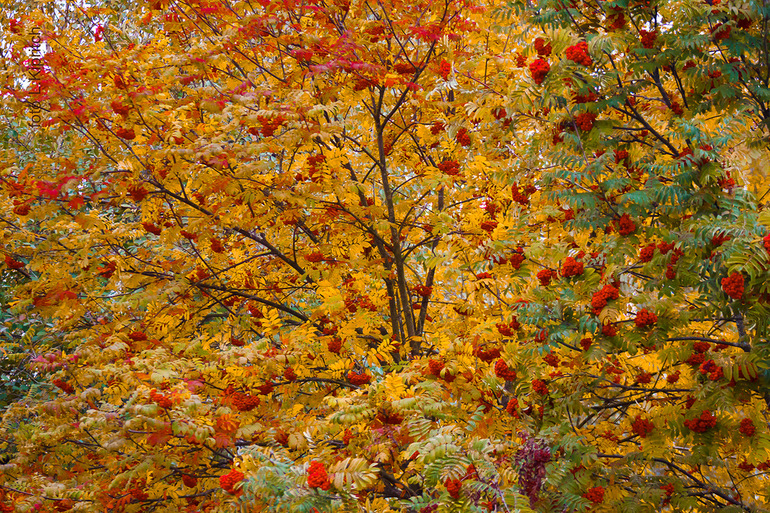
Common rowan leaves have cirrus leaves, which form an openwork crown. In whole leaves, the form can be lobed, serrated or simple. Real shrubs are valued higher as edible, bittersweet fruits grow on them. Regardless of the shape of the leaves, wood is used to make furniture, and the plant itself is used to decorate a garden or park. Low-growing shrubs look good singly or in group arrangements, alleys.
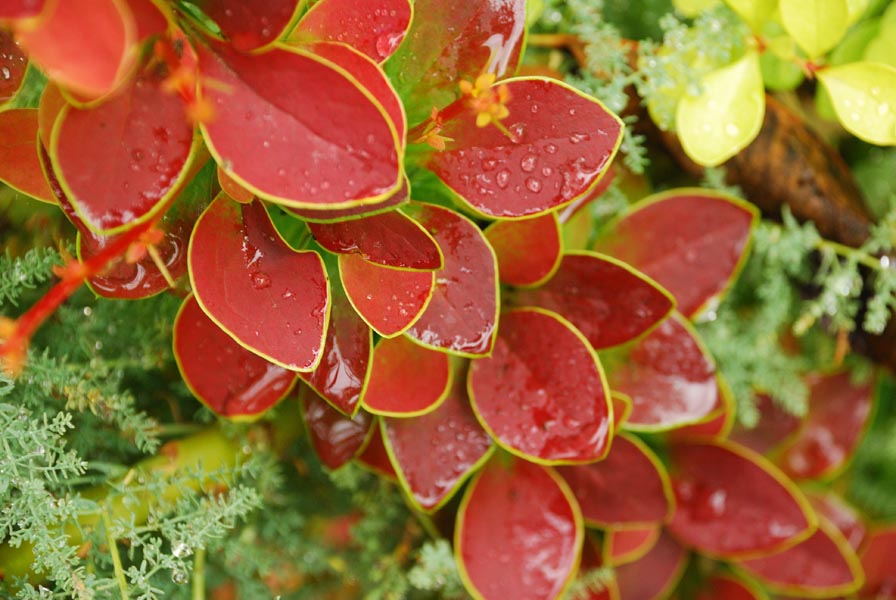 You may be interested in:
You may be interested in:In the spring, the buds are just starting to bloom, and the leaves are fully developed. According to them, and determine the variety of mountain ash. Several cirrus large elements appear on one handle at once, at the top there is the smallest unpaired process. The length of unpaired complex leaves reaches 12 cm, their edges are serrated, the tips are sharp. The end of a thin stalk is studded with small elements with a solid bottom.
In late spring, a noticeable fluff appears on the branches, which covers both sides of the leaves. By the summer, it disappears, only strong, flexible elements remain. Hair is needed to keep moisture in the plant longer. In June-July, the upper side of the leaf becomes dull green, dull and rough.The lower one is covered with a silver-white coating, it feels like felt to the touch.
In late autumn, the color of rowan leaves changes three times. In September, they become bright yellow, gradually changing hue to muted orange. At the end of October, the palette becomes scarlet and scarlet.
Leaf varieties
There are several whole-leaved plants that deserve special attention. They differ in the shape and size of leaves, inflorescences, color and ripening period of the fruit. Fancy varieties mountain ash:
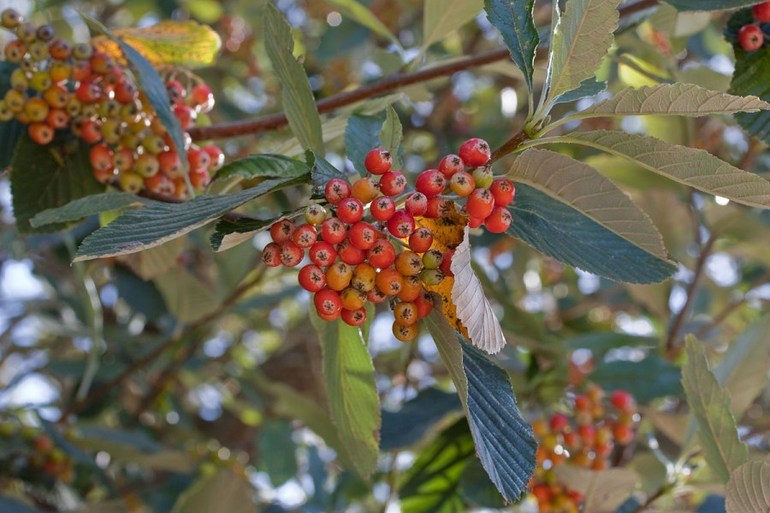
- Aria;
- Intermediate;
- Elderberry;
- Kene
- Glogovina;
- Olkholistnaya.
An unusual mountain ash Aria grows in the rare forests of Western Europe. Its growth reaches 10 m, and the diameter of the crown is 8 m. The leaves are reminiscent of alder in shape - solid, round, pointed top. The process area is 15x10 cm. In summer it is green, the underside is whitish, as if powdered with flour. In the early autumn, the mountain ash looks like it is covered with bronze paint.
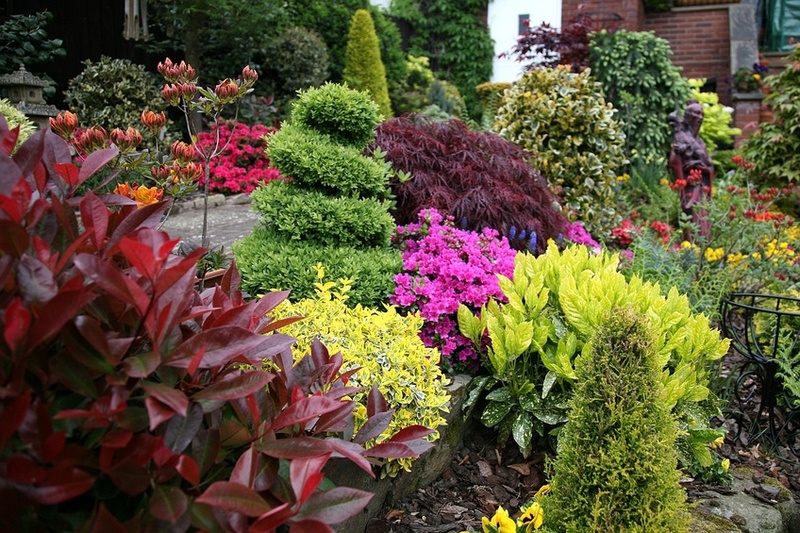 You may be interested in:
You may be interested in:An intermediate or Swedish variety is represented by lonely-growing tall (up to 12 m) trees. Range: Scandinavian, Baltic, Central European forests. In summer, the leaves of this mountain ash are green, covered with hairs, and in the fall they become red. The wide crown has the shape of a circle or oval.
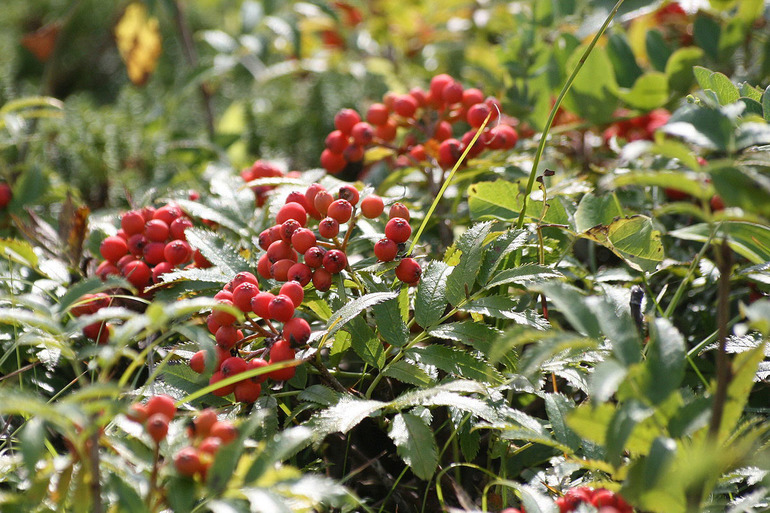
The elderberry tree can be seen in the Khabarovsk Territory, on Sakhalin and Kamchatka, and even in Japan. The plant resembles a shrub more: the maximum height does not reach 2.5 m, a small ovoid crown, brown-green leaves. The processes are unpaired, with sharp apices; their length is 18 cm. From one petiole, 7 to 15 leaves can grow.
In the flora of Central China, mountain ash Kene is found. The plant prefers a warm climate, plenty of moisture and soft soil. Decorative crown rises 3-6 meters above the ground. The non-pinnate leaves turn purple in the fall, and the white fruits are sung in the early winter.
Healing bank or mountain ash of Glogovin is found in the Crimea and the Caucasus. Tall 25-meter trees are distinguished by olive leaves, the shape of which resembles a heart. In the summer they are dark green, hairy with hairs, and in the fall they turn yellow and orange.
Fruit Varieties
Based on the usual mountain ash, botanists developed several interesting varieties. They differ in stem height, crown size, fruit ripening speed. The following varieties are resistant to frost:

- Bead;
- Large scarlet;
- Titanium;
- Dessert
- Michurinskaya;
- Liqueur.
A bead is a low plant with red fruits. The first berries appear 4–5 years after planting; they taste like cranberries. Large Red Rowan fruits appear faster, but they are tart and slightly bitter. Titanium matures every year, the shrub itself is low. The fruits are dark red, covered with a whitish bloom.
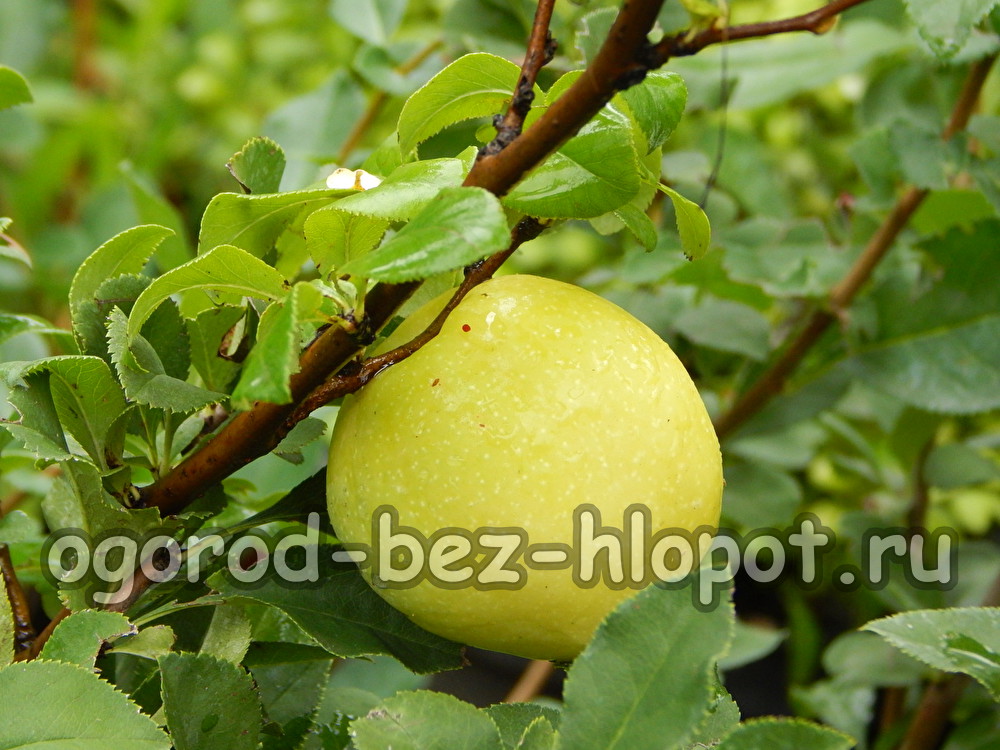 You may be interested in:
You may be interested in:The dessert variety needs to be constantly fertilized, otherwise the mountain ash will be shallow. The fruits are sung annually, dark juicy berries have a tart taste.
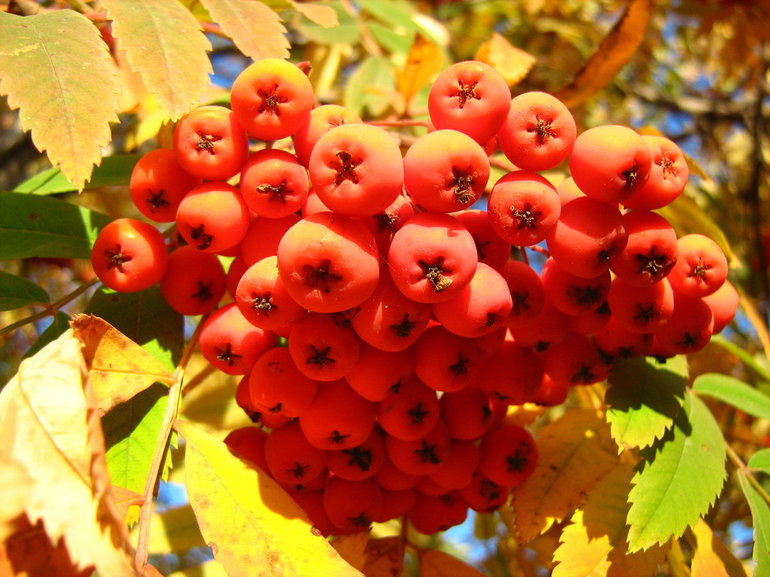
Yellow and white berries can grow in the gardens. Although these are rare varieties, they have a high yield. The branches are so burdened with fruits that they bend almost to the ground. Berries taste juicy and sweet, suitable for making jam, liquor and syrup. In addition to practical value, mountain ash is used as a bright decoration of the garden.
Rowan planting
The best thing tackle rowanberry planting in the fall. If it is not possible to plant a seedling in October, then you can plant it in early spring - in mid-April. To do this, dig a hole with a depth and width of 80 and 60 cm, respectively. Although mountain ash is unpretentious to climatic conditions, it is better to fertilize the soil. Top dressing consists of a mixture of 100 g of potassium, 200 g of superphosphate and 5 kg of humus or peat.
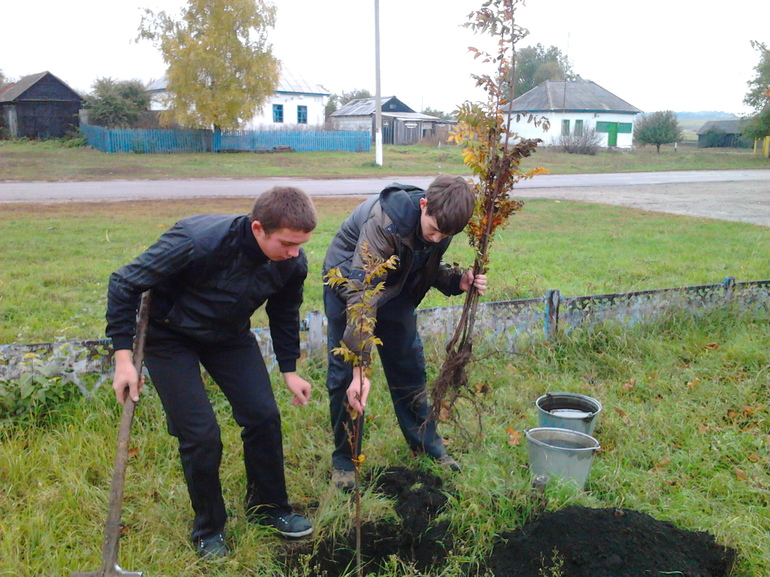
The seedling is lowered into the pit, trampled the earth around it. In the cold season, they are insulated with coniferous branches and paws. A suitable place for the plant is a strip along the fence. The distance between the trunks should be 4−5 m. After planting, the seedling is abundantly watered.
Mountain ash propagates by vaccination, for which hawthorn or the same tree is suitable. A sleeping stalk or kidney is vaccinated in October-November; budding should be done in June. Young shoots will receive moisture and nutrients from the mother tree, as the mountain ash has a very strong root system.
You can propagate the plant using seeds, this method is simpler than the previous one. In the fall, open sowing is done. Density: 150 seeds are enough for 1 running meter. Top soil is covered with dry leaves and spruce needles. Crops emerge very quickly, but bear fruit later.
Care Tips
Mountain ash is unpretentious in leaving. But there are procedures which must be performed:
- periodic watering;
- pruning branches to form a crown;
- loosening the soil;
- fight against diseases and pests.
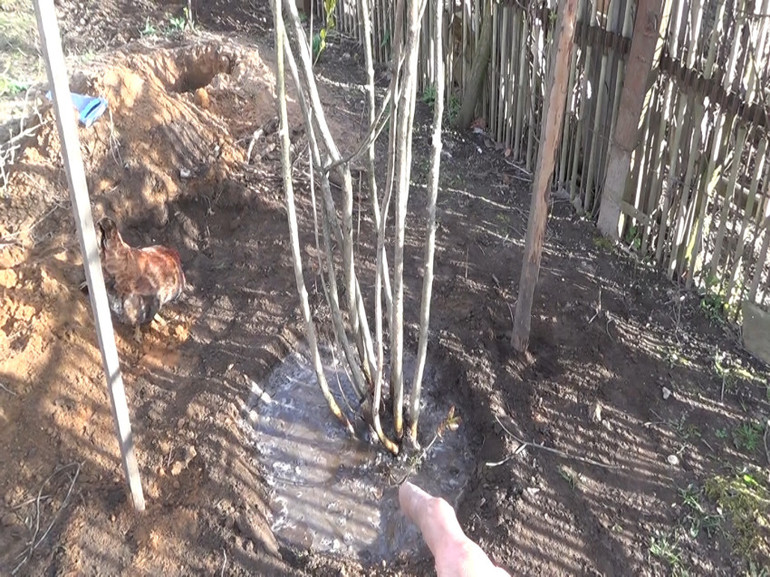
After planting a seedling in the ground, the crown of the head is cut off to it, and in the spring, the newly formed branches are also shortened. Some will have to be removed before the first kidney. In adult mountain ash, the crown needs to be thinned out, old and internal shoots are removed, as are processes without fruits. Work must be carried out in late October or March.
Adults need to fertilize and feed. This applies only to fruiting plants. Together with water, mountain ash is watered with nitrogen, phosphorus and potassium complexes. And also need treat it from pests. The tree undergoes diseases such as rust, all types of necrosis, gray spotting and powdery mildew. In order to avoid infection, seedlings and adult plants need to be sprayed with insecticides or other chemicals.
The characteristics of the plant, the shape of the leaves, variety of fruits, planting rules and recommendations for care - all this is included in the description of mountain ash. In autumn, a tree can be cut, collected seeds and berries from it, transplanted. The fruits of the bush are used to make jam, compotes and homemade alcohol, they contain many useful elements and vitamin complexes. In addition, branches with inflorescences of berries will decorate the autumn garden.

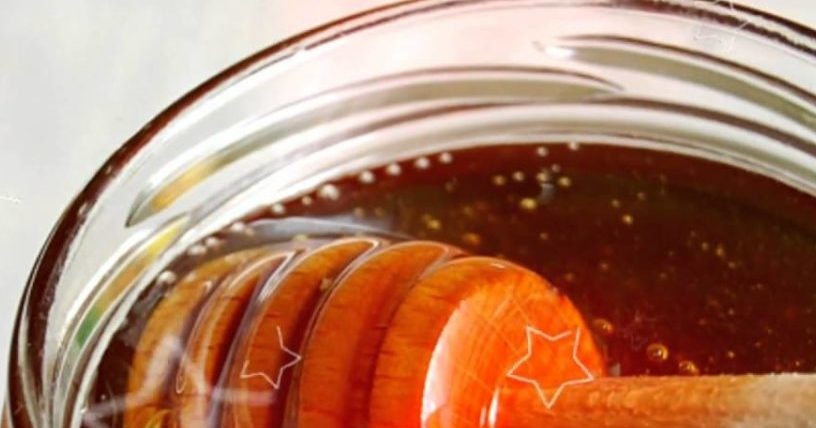
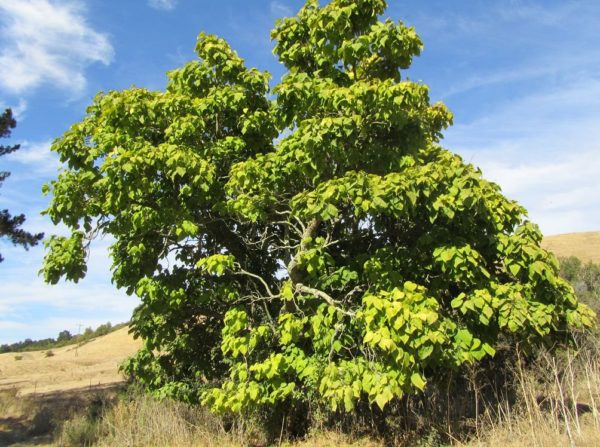
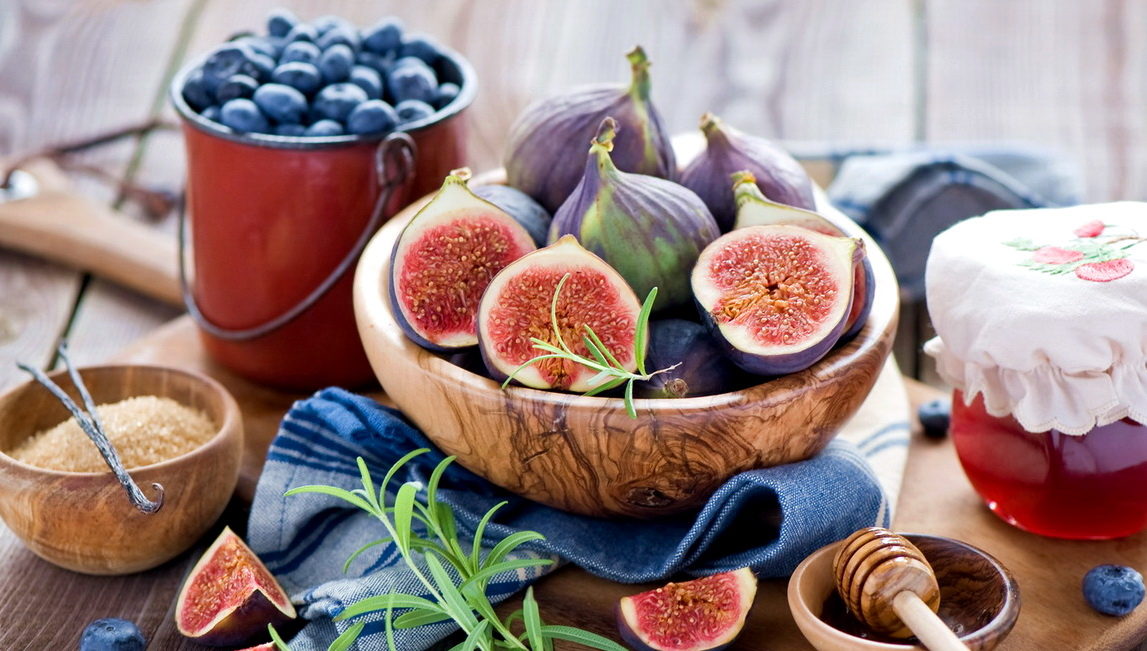
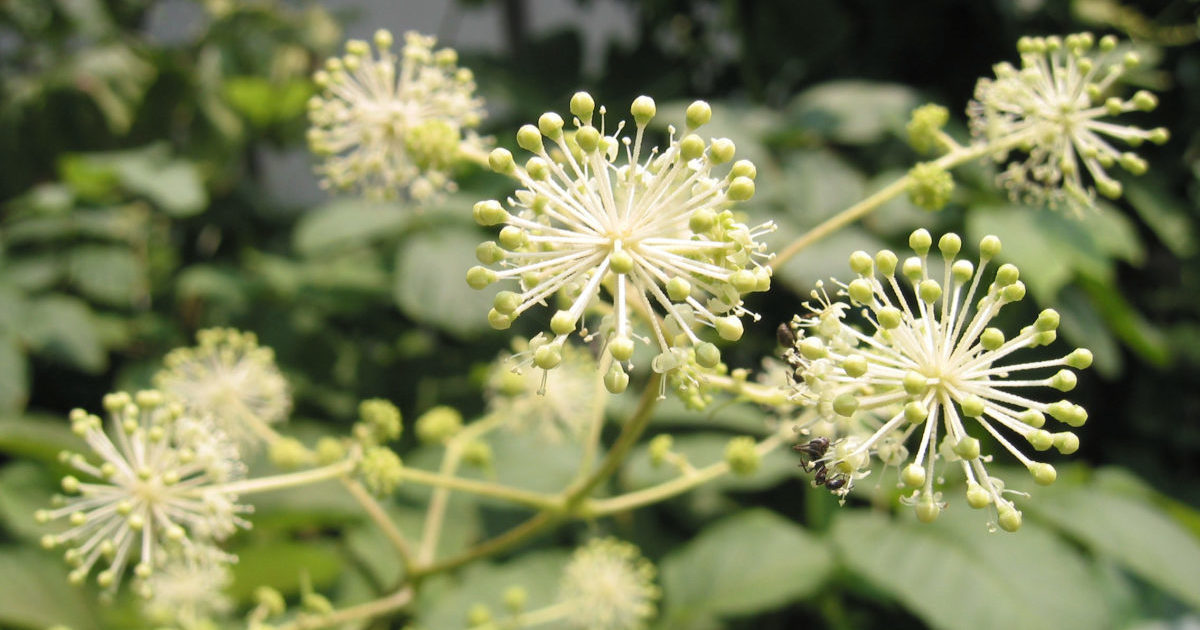 Aralia Manchurian - medicinal properties and contraindications, the use of tinctures in bodybuilding
Aralia Manchurian - medicinal properties and contraindications, the use of tinctures in bodybuilding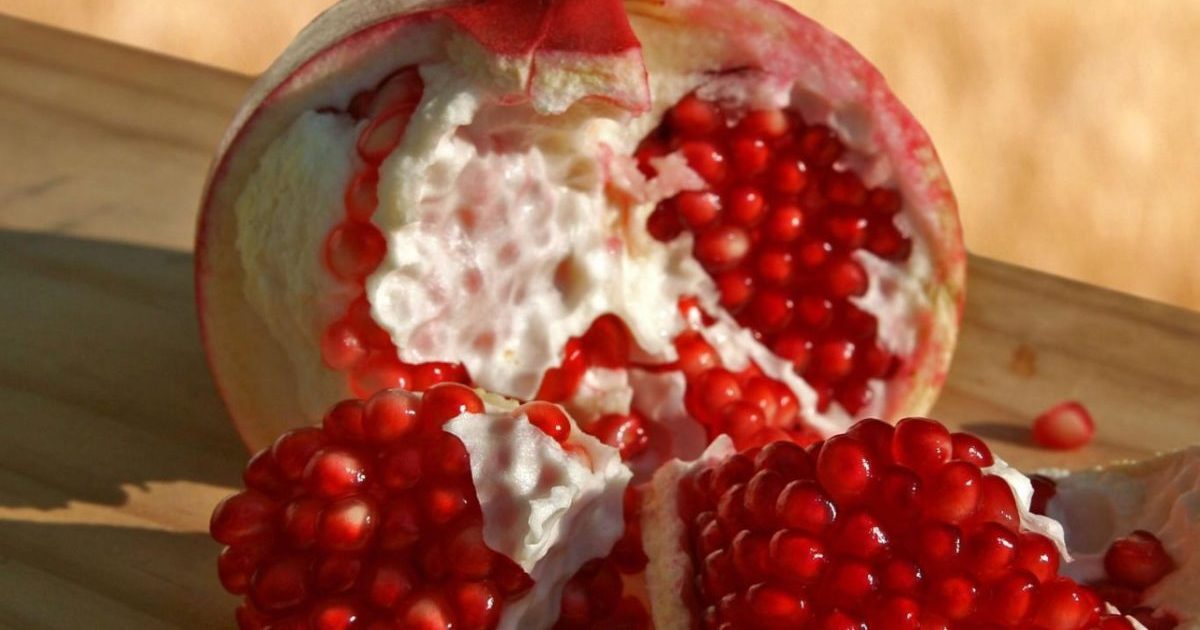 Seedless pomegranate - cutaway appearance, benefits and harms
Seedless pomegranate - cutaway appearance, benefits and harms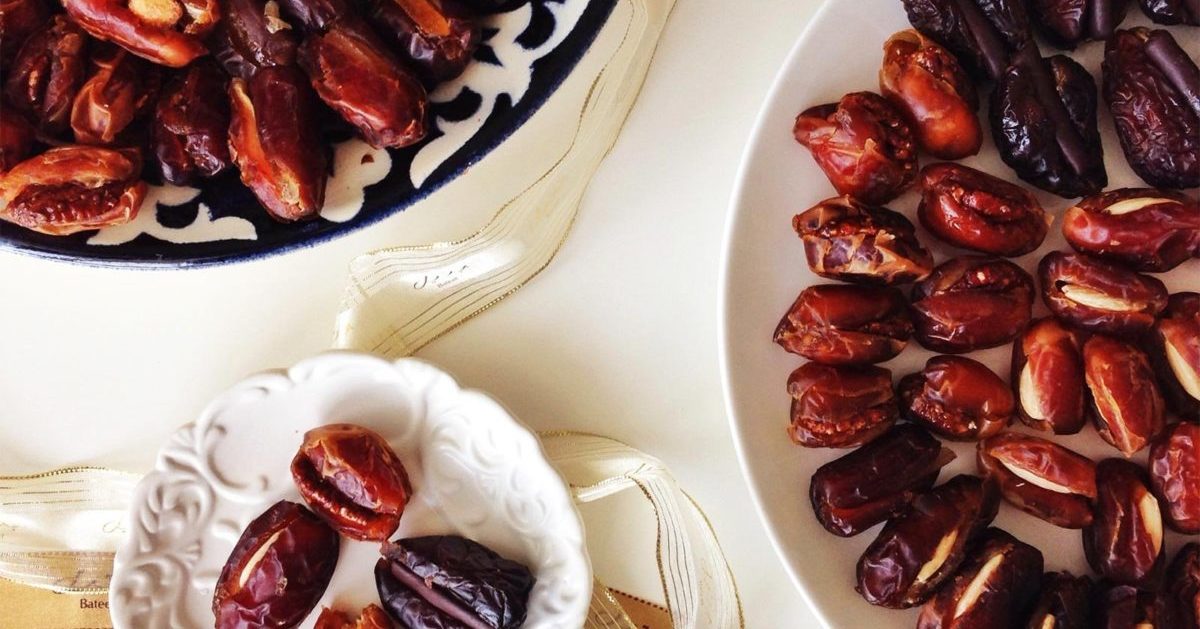 Dates - the benefits and harm to the body, how much you need to eat, properties and calorie content
Dates - the benefits and harm to the body, how much you need to eat, properties and calorie content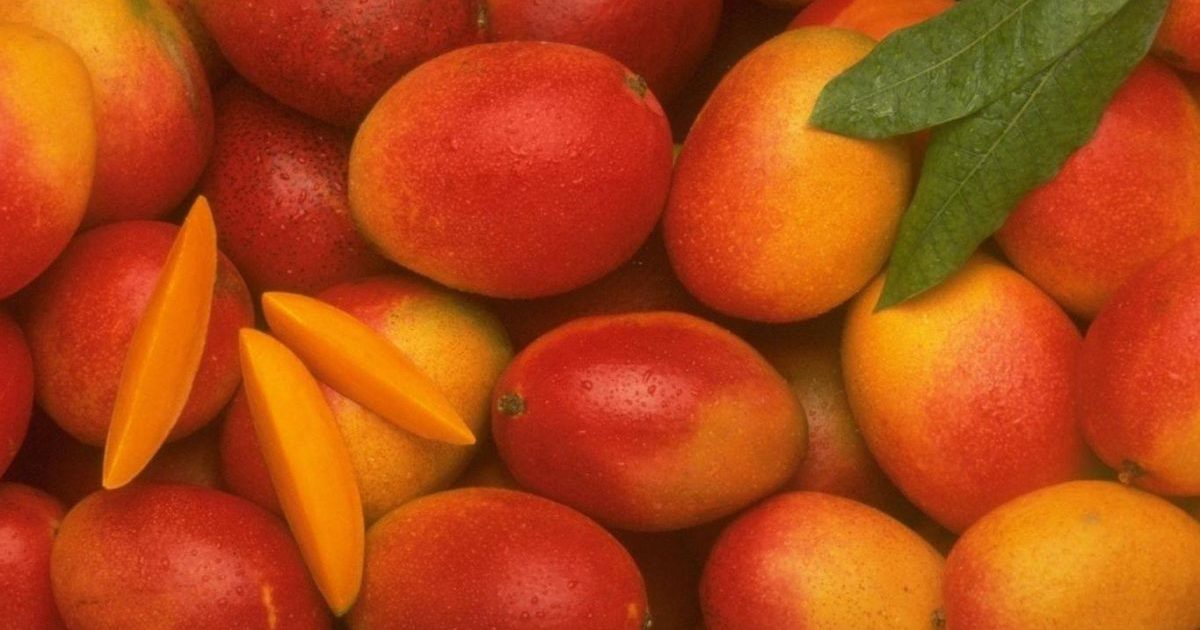 The benefits and harms of mango for the body of women and men - how to eat it?
The benefits and harms of mango for the body of women and men - how to eat it?